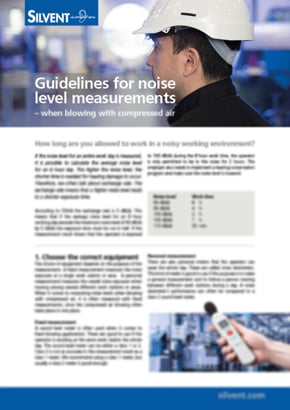A new version of this article was first published on silvent.com
Sound consists of pressure variations that create vibrations in the air. These vibrations are captured by the ear drum and interpreted as sounds.
- The unit for measuring sound strength and sound level is called the Decibel (dB).
- A decibel is a logarithmic unit. This means that two identical sources of sound, for example, air guns, together create a sound level that is 3 dB higher than if only one of the air guns is used. If the sound level for one air gun is 81 dB, the sound level of two identical air guns is 84 dB. Ten equally strong sound sources together create a sound level that is 10 dB higher.
- Frequency is a measure of the pitch, which is expressed in Hertz (Hz). It is the number of vibrations in the air, which indicates the frequency of the sound. The more vibrations there are in one second, the higher the pitch of the sound. A low frequency results in bass tones, while a high frequency produces treble tones. Sound normally consists of tones with different frequencies.
- An equivalent sound level is the average sound level over a given time period. This is often used to measure the average noise level for a person over an 8-hour work period.
- The half-level means that an elevated sound level results in a shorter exposure time. According to OSHA, the half-life for USA is 5 dB. This means that if the noise level increases by 5 dB, the approved exposure time is cut in half.
Noise level Work time 90 dB 8 hr 95 dB 4 hr 100 dB 2 hr 105 dB 1 hr 110 dB 30 min
- A decrease in the noise level by 1 dB is almost impossible for the human ear to detect. However, if the noise level decreases by 10 dB, a human ear will interpret this as the noise level being cut in half. Conversely, an increase of 10 dB sounds like a doubling of the noise level.
If you are aware of the nature of sound, it will be easier for you to make changes to improve the environment for workers in your industry. We are happy to help if you have any questions!

Find out more about blowing with compressed air nozzles
noise reduction in manufacturing



